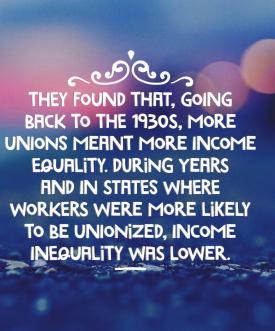Economic View
The New York Times
By Susan Dynarski
July 6, 2018
New evidence shows that unions played a major role in reducing income inequality in the United States in the decades when organized labor was strong.
But it also demonstrates that the decline in union power since the 1960s — which may be exacerbated as a result of a recent Supreme Court decision— has contributed to the widening gap between rich and poor.
The new insights come from a working paper, “Unions and Inequality Over the Twentieth Century: New Evidence from Survey Data,” by four economists: Henry Farber, Daniel Herbst and Ilyana Kuziemko of Princeton, and Suresh Naidu of Columbia. They establish that unions have constrained income inequality far beyond their own membership ranks.
While the scholars can’t pinpoint the precise mechanism at work, they speculate that unions have indirectly increased pay at firms nervous that their own employees might organize. Unions have also lobbied for higher minimum wages and pushed to hold down executive salaries. They have also advocated for broader access to health care, countering a key channel  through which income inequality can harm all of society.
through which income inequality can harm all of society.
If market forces are primarily responsible for the growing inequality, then the best we can do, from an economic standpoint, is to try to buffer their negative effects on low-skilled workers through “post-market” policies like taxes and social welfare programs. But if institutions matter more, then we can reduce inequality with market-oriented policies that, for example, bolster the minimum wage or ease the formation of unions.
Union workers now earn about 20 percent more than nonunion workers in similar jobs. Remarkably, this union premium has held steady since the 1930s. But increasing wages for low-skilled union members is just one channel through which unions can reduce income inequality. Unions can also affect the earnings of nonunion workers.
To capture such effects, the researchers broadened their lens to include the entire distribution of workers and their wages beyond those who are in typically unionized jobs and industries. They found that, going back to the 1930s, more unions meant more income equality. During years and in states where workers were more likely to be unionized, income inequality was lower.





